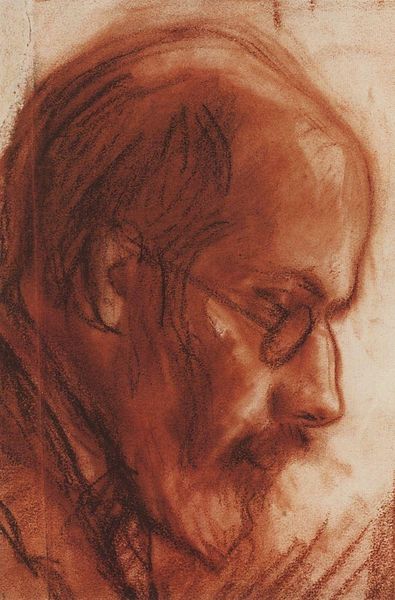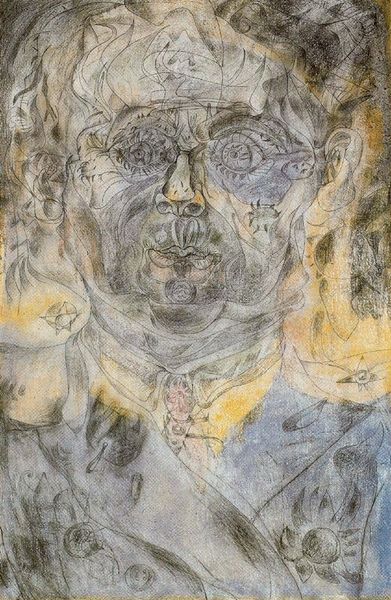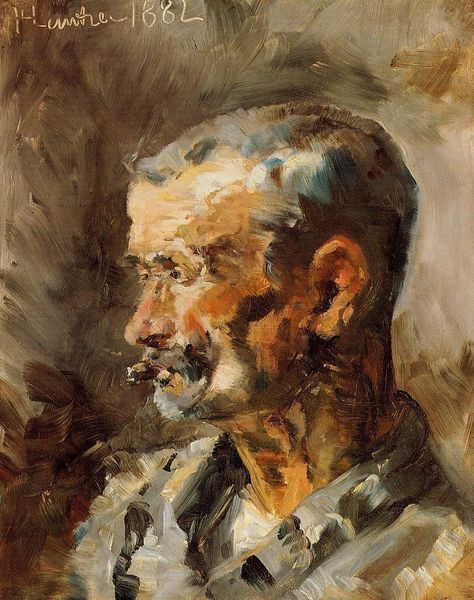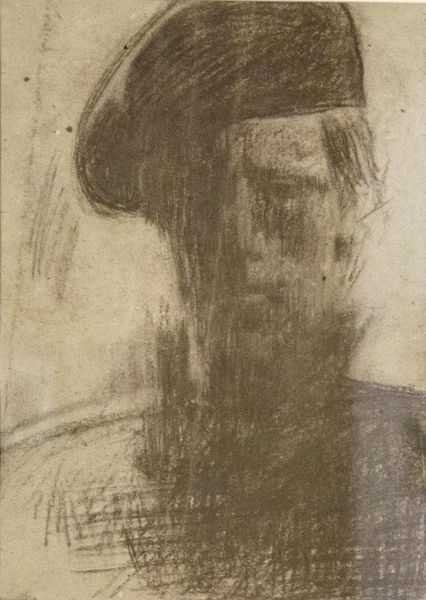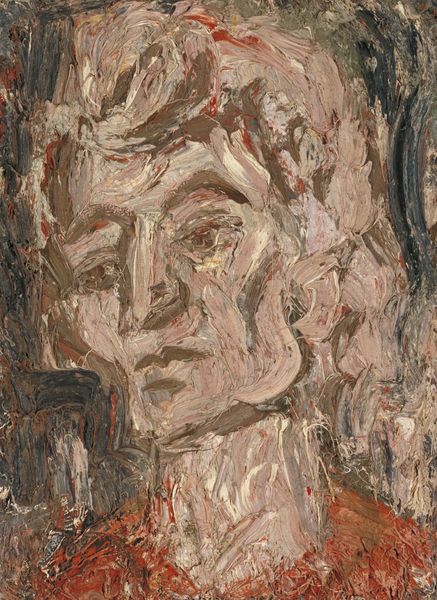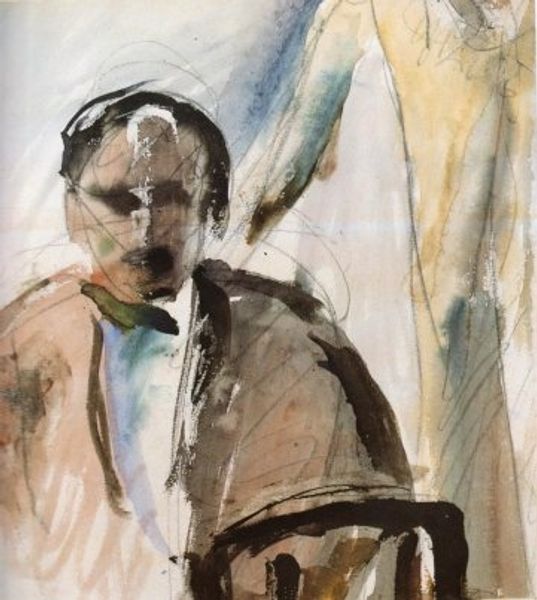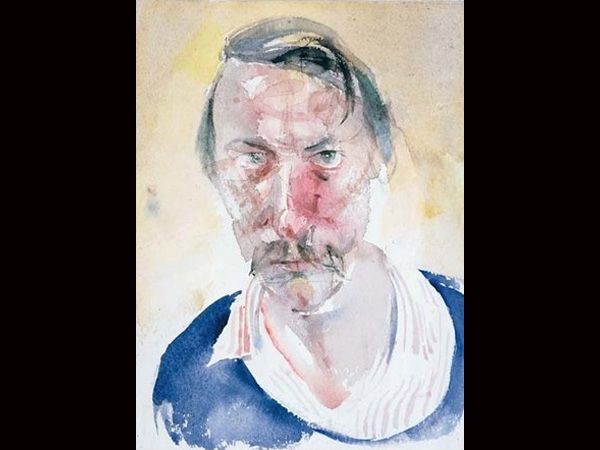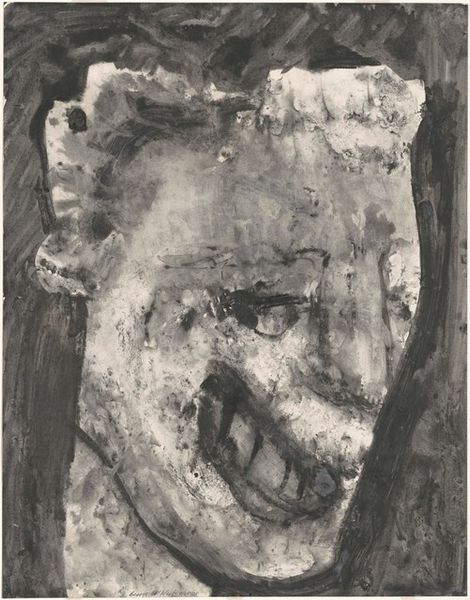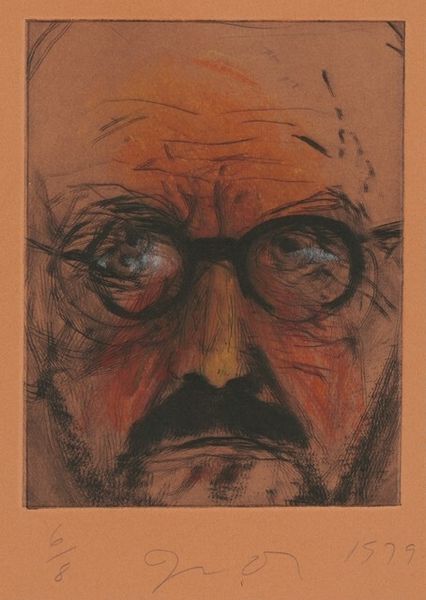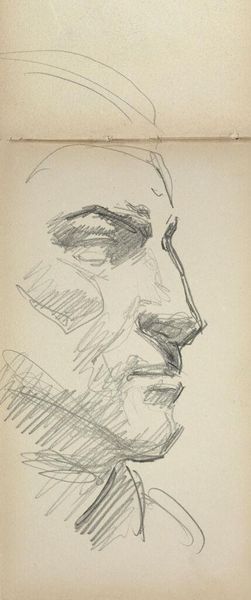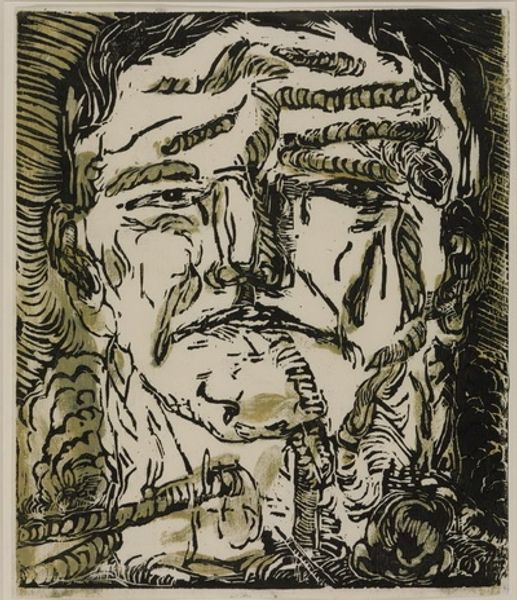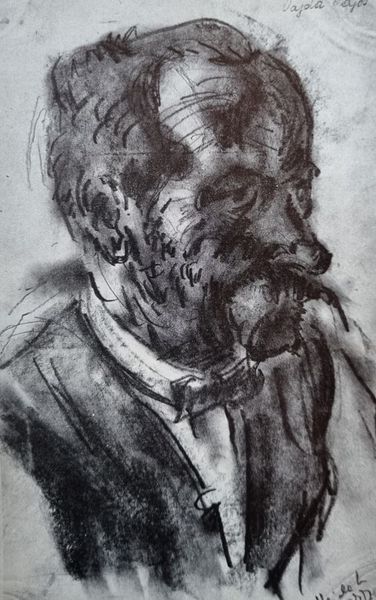
drawing, paper, watercolor, pencil
#
portrait
#
drawing
#
self-portrait
#
charcoal drawing
#
paper
#
watercolor
#
pencil
#
expressionism
#
portrait drawing
Copyright: Public domain
Editor: This is Kuzma Petrov-Vodkin's Self-Portrait from 1921, made with pencil, watercolor, and charcoal on paper. It's striking how the artist uses light and shadow to create a sense of intensity, almost confrontational. How do you interpret this work? Curator: Considering the year it was created, 1921, in the aftermath of World War I and amidst the Russian Revolution, this self-portrait speaks volumes about the artist's interior state and perhaps the broader socio-political context. Do you see how the severe expression and stark lighting create a sense of unease, reflecting the anxieties of that era? Editor: Yes, the heavy shadows definitely contribute to that feeling. I'm wondering if that direct gaze has something to say about Petrov-Vodkin's role as an artist during a time of massive upheaval? Curator: Precisely. Artists of this period were grappling with questions of identity, purpose, and responsibility in a rapidly changing world. Was he looking critically at himself, or perhaps challenging viewers to confront the unsettling truths of their own time? Also consider how the monochrome palette strips away the superficial, forcing us to engage with the raw emotion. Does that monochromatic feel invoke specific thoughts? Editor: I think that rawness makes the piece feel much more personal, like it's inviting us into his inner world at a very vulnerable moment. Curator: And remember, self-portraits have often served as declarations of self, statements of intent. Given the tumultuous backdrop, his act of self-representation takes on an even more poignant dimension. It almost screams out identity! Editor: So much to consider! Thank you. It makes me want to go read more about Petrov-Vodkin and early Soviet art. Curator: Absolutely. Thinking about art within its social and political framework opens up such richer, more nuanced interpretations.
Comments
No comments
Be the first to comment and join the conversation on the ultimate creative platform.
